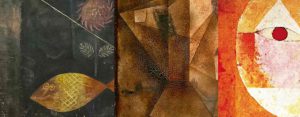String art invented by Englishwoman Mary Everest Boole (1832-1916). Idea behind developing string art to make mathematical ideas more accessible to children. String art uses coloured string, wool or wire to create geometric patterns. The ‘string’ held between nails hammered into a base board. Many straight lines of string can form shapes ranging from simple curves to more complex designs resembling flowers, sailing boats, etc.
A modern version of these geometric curves is the Bézier curve. Modern days used in computer graphics programs but was developed prior to modern computers. French mathematician and physicist, Paul de Castejau (born 1930) created an algorithm for subdividing a curve into two curve segments at an arbitrary parametric location. Another French mathematician and engineer, Pierre Bézier, developed a curve formula inspired by de Castejau’s algorithm. Pierre was working for an automobile company where he needed an accurate way to describe a curve for design and manufacture. Bézier’s curve could describe any second degree type of curve with just four points and it became known by the name of its inventor.
One of those inspired artists is American artist John Eichinger. He specialized in creating geometric designs which he referred to as “string mandalas.”
A popular hobby kit distributor at the time, Open Door Enterprises, first marketed his string art kits in the late 1960s. This is noted as one of the first times everyday people took interest in string art. It became widely popular in the 1970s with an uncountable amount of U.S. homes boasting home-made string art on their walls.
String Art : The Steam Behind the Fun !
Many shapes, like triangles, squares and rectangles can be created using the straight lines like the once you make when stretch a string from one point to another. If you space pins evenly around a square, you can use them to make a grid from string.
You can also make a curve using straight lines! Lots of straight lines positioned in a certain way create a parabolic curve. This is the same type of curve a thrown ball makes, when gravity pulls it back down.
To make a parabolic curve from string, position the pins or nails on perpendicular axes at equal distances apart (in the shape of a plus sign). Connect a string from the X axis (horizontal axis) pin closest to where the axes meet, to a pin on the Y axis (vertical axis) that is farthest from the intersection. Connect the pin second closest to the first one (on the X axis) to the pin second farthest away on the Y-axis and repeat the pattern several times to create a parabolic curve.



